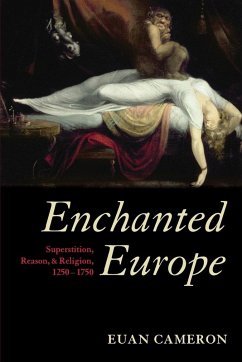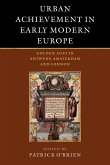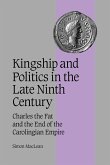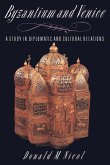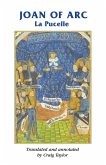- Broschiertes Buch
- Merkliste
- Auf die Merkliste
- Bewerten Bewerten
- Teilen
- Produkt teilen
- Produkterinnerung
- Produkterinnerung
Enchanted Europe is the first comprehensive account of Europe's long, complex relationship with its own folklore and popular religion. From debates over the efficacy of charms and spells to belief in fairies and demons, Euan Cameron constructs a compelling narrative of the rise and fall of 'superstition' in the European mind.
Andere Kunden interessierten sich auch für
![Empires of Faith Empires of Faith]() Peter SarrisEmpires of Faith38,99 €
Peter SarrisEmpires of Faith38,99 €![Women in Purple Women in Purple]() Judith HerrinWomen in Purple37,99 €
Judith HerrinWomen in Purple37,99 €![Urban Achievement in Early Modern Europe Urban Achievement in Early Modern Europe]() Urban Achievement in Early Modern Europe61,99 €
Urban Achievement in Early Modern Europe61,99 €![Kingship and Politics in the Late Ninth Century Kingship and Politics in the Late Ninth Century]() Simon MacleanKingship and Politics in the Late Ninth Century55,99 €
Simon MacleanKingship and Politics in the Late Ninth Century55,99 €![Byzantium and Venice Byzantium and Venice]() Donald M. NicolByzantium and Venice46,99 €
Donald M. NicolByzantium and Venice46,99 €![Polychronicon Ranulphi Higden, Monachi Cestrensis - Volume 1 Polychronicon Ranulphi Higden, Monachi Cestrensis - Volume 1]() Ranulf HigdenPolychronicon Ranulphi Higden, Monachi Cestrensis - Volume 167,99 €
Ranulf HigdenPolychronicon Ranulphi Higden, Monachi Cestrensis - Volume 167,99 €![Joan of Arc Joan of Arc]() Joan of Arc26,99 €
Joan of Arc26,99 €-
-
-
Enchanted Europe is the first comprehensive account of Europe's long, complex relationship with its own folklore and popular religion. From debates over the efficacy of charms and spells to belief in fairies and demons, Euan Cameron constructs a compelling narrative of the rise and fall of 'superstition' in the European mind.
Produktdetails
- Produktdetails
- Verlag: Oxford University Press(UK)
- Seitenzahl: 486
- Erscheinungstermin: 8. Juli 2013
- Englisch
- Abmessung: 234mm x 156mm x 26mm
- Gewicht: 731g
- ISBN-13: 9780199605118
- ISBN-10: 0199605114
- Artikelnr.: 37254598
- Herstellerkennzeichnung
- Libri GmbH
- Europaallee 1
- 36244 Bad Hersfeld
- gpsr@libri.de
- Verlag: Oxford University Press(UK)
- Seitenzahl: 486
- Erscheinungstermin: 8. Juli 2013
- Englisch
- Abmessung: 234mm x 156mm x 26mm
- Gewicht: 731g
- ISBN-13: 9780199605118
- ISBN-10: 0199605114
- Artikelnr.: 37254598
- Herstellerkennzeichnung
- Libri GmbH
- Europaallee 1
- 36244 Bad Hersfeld
- gpsr@libri.de
Euan Cameron received his B.A. and D.Phil. degrees from Oxford University. He was a Fellow of All Souls College, Oxford from 1979 to 1986, and a member of the Department of History of the University of Newcastle upon Tyne from 1985 to 2002. Since 2002 he has been Henry Luce III Professor of Reformation Church History at Union Theological Seminary in New York City, where he has also served as Vice-President for Academic Affairs and Dean of the Faculty. He is a member of the departments of Religion and History at Columbia University.
* Introduction
* Part 1: Discerning and Controlling Invisible Forces: The Image of
'Superstition' in the Literature
* 1: The Problems of Pre-Modern Life
* 2: A Densely Populated Universe
* 3: Helpful Performances: The Uses of Ritual
* 4: Insight and Foresight: Techniques of Divination
* Part 2: The Learned Response to Superstitions in the Middle Ages:
Angels and Demons
* 5: The Patristic and Early Medieval Heritage
* 6: Scholastic Demonology in the Twelfth and Thirteenth Centuries
* 7: The Demonological Reading of Superstitions in the Late Middle
Ages: Areas of Consensus
* 8: The Demonological Reading of Superstitions in the Late Middle
Ages: Areas of Difference and Disagreement
* 9: The pastoral use of the scholastic critique of superstitions
* Part 3: Superstitions in Controversy: Renaissance and Reformations
* 10: Some Renaissance Christian Humanists and 'Superstition'
* 11: Magic, the Fallen World, and Fallen Humanity: Martin Luther on
the devil and superstitions
* 12: Prodigies, Providences and Possession: the 16th-century
Protestant Context
* 13: The Protestant Critique of Consecrations: Catholicism as
Superstition
* 14: The Protestant Doctrine of Providence and the Transformation of
the Devil
* 15: Reformed Catholicism: Purifying Sources, Defending Traditions
* Part 4: The Cosmos changes shape: Superstition is re-defined
* 16: Demonology becomes an open subject in the 17th century
* 17: Defending the 'invisible world': the campaign against 'Saducism'
* 18: Towards the Enlightenment
* Part 1: Discerning and Controlling Invisible Forces: The Image of
'Superstition' in the Literature
* 1: The Problems of Pre-Modern Life
* 2: A Densely Populated Universe
* 3: Helpful Performances: The Uses of Ritual
* 4: Insight and Foresight: Techniques of Divination
* Part 2: The Learned Response to Superstitions in the Middle Ages:
Angels and Demons
* 5: The Patristic and Early Medieval Heritage
* 6: Scholastic Demonology in the Twelfth and Thirteenth Centuries
* 7: The Demonological Reading of Superstitions in the Late Middle
Ages: Areas of Consensus
* 8: The Demonological Reading of Superstitions in the Late Middle
Ages: Areas of Difference and Disagreement
* 9: The pastoral use of the scholastic critique of superstitions
* Part 3: Superstitions in Controversy: Renaissance and Reformations
* 10: Some Renaissance Christian Humanists and 'Superstition'
* 11: Magic, the Fallen World, and Fallen Humanity: Martin Luther on
the devil and superstitions
* 12: Prodigies, Providences and Possession: the 16th-century
Protestant Context
* 13: The Protestant Critique of Consecrations: Catholicism as
Superstition
* 14: The Protestant Doctrine of Providence and the Transformation of
the Devil
* 15: Reformed Catholicism: Purifying Sources, Defending Traditions
* Part 4: The Cosmos changes shape: Superstition is re-defined
* 16: Demonology becomes an open subject in the 17th century
* 17: Defending the 'invisible world': the campaign against 'Saducism'
* 18: Towards the Enlightenment
* Introduction
* Part 1: Discerning and Controlling Invisible Forces: The Image of
'Superstition' in the Literature
* 1: The Problems of Pre-Modern Life
* 2: A Densely Populated Universe
* 3: Helpful Performances: The Uses of Ritual
* 4: Insight and Foresight: Techniques of Divination
* Part 2: The Learned Response to Superstitions in the Middle Ages:
Angels and Demons
* 5: The Patristic and Early Medieval Heritage
* 6: Scholastic Demonology in the Twelfth and Thirteenth Centuries
* 7: The Demonological Reading of Superstitions in the Late Middle
Ages: Areas of Consensus
* 8: The Demonological Reading of Superstitions in the Late Middle
Ages: Areas of Difference and Disagreement
* 9: The pastoral use of the scholastic critique of superstitions
* Part 3: Superstitions in Controversy: Renaissance and Reformations
* 10: Some Renaissance Christian Humanists and 'Superstition'
* 11: Magic, the Fallen World, and Fallen Humanity: Martin Luther on
the devil and superstitions
* 12: Prodigies, Providences and Possession: the 16th-century
Protestant Context
* 13: The Protestant Critique of Consecrations: Catholicism as
Superstition
* 14: The Protestant Doctrine of Providence and the Transformation of
the Devil
* 15: Reformed Catholicism: Purifying Sources, Defending Traditions
* Part 4: The Cosmos changes shape: Superstition is re-defined
* 16: Demonology becomes an open subject in the 17th century
* 17: Defending the 'invisible world': the campaign against 'Saducism'
* 18: Towards the Enlightenment
* Part 1: Discerning and Controlling Invisible Forces: The Image of
'Superstition' in the Literature
* 1: The Problems of Pre-Modern Life
* 2: A Densely Populated Universe
* 3: Helpful Performances: The Uses of Ritual
* 4: Insight and Foresight: Techniques of Divination
* Part 2: The Learned Response to Superstitions in the Middle Ages:
Angels and Demons
* 5: The Patristic and Early Medieval Heritage
* 6: Scholastic Demonology in the Twelfth and Thirteenth Centuries
* 7: The Demonological Reading of Superstitions in the Late Middle
Ages: Areas of Consensus
* 8: The Demonological Reading of Superstitions in the Late Middle
Ages: Areas of Difference and Disagreement
* 9: The pastoral use of the scholastic critique of superstitions
* Part 3: Superstitions in Controversy: Renaissance and Reformations
* 10: Some Renaissance Christian Humanists and 'Superstition'
* 11: Magic, the Fallen World, and Fallen Humanity: Martin Luther on
the devil and superstitions
* 12: Prodigies, Providences and Possession: the 16th-century
Protestant Context
* 13: The Protestant Critique of Consecrations: Catholicism as
Superstition
* 14: The Protestant Doctrine of Providence and the Transformation of
the Devil
* 15: Reformed Catholicism: Purifying Sources, Defending Traditions
* Part 4: The Cosmos changes shape: Superstition is re-defined
* 16: Demonology becomes an open subject in the 17th century
* 17: Defending the 'invisible world': the campaign against 'Saducism'
* 18: Towards the Enlightenment

